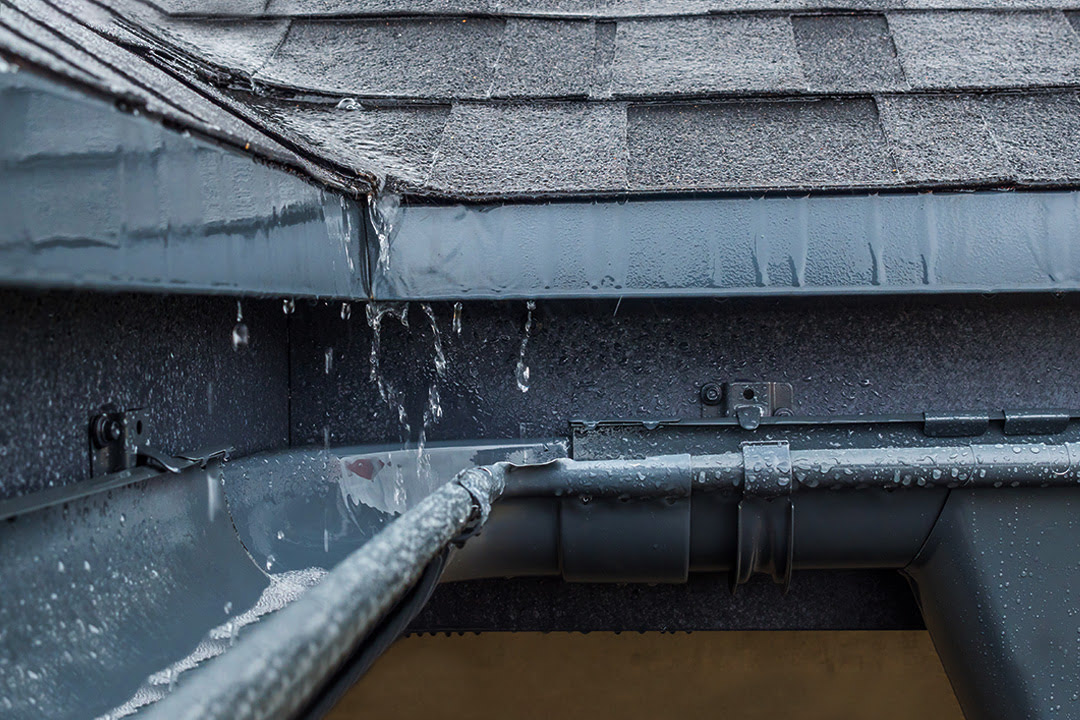

Articles
How To Fix Gutters Holding Water
Modified: February 17, 2024
Learn effective techniques for fixing gutters that hold water with our informative articles. Discover step-by-step solutions to ensure proper drainage and prevent damage to your home.
(Many of the links in this article redirect to a specific reviewed product. Your purchase of these products through affiliate links helps to generate commission for Storables.com, at no extra cost. Learn more)
Introduction
Gutters play a vital role in protecting our homes from water damage by directing rainwater away from the roof and foundation. However, when gutters start to hold water instead of draining it properly, it can lead to a host of problems, including leaks, mold growth, and even structural damage. Fixing gutters that are holding water is crucial to maintain the integrity of your home and prevent costly repairs in the long run.
There can be several reasons why your gutters are not draining as they should. It could be due to clogs or blockages, improper slope, damaged gutters, or even the absence of gutter guards. In this article, we will guide you through the process of fixing gutters that are holding water, ensuring that your gutters function optimally and protect your home effectively.
Before we delve into the solutions, it is important to acknowledge the tools and materials you will need for this project. These typically include a ladder, gloves, a garden hose, a plumber’s snake or auger, a level, a drill, screws, a putty knife, gutter sealant, and gutter guards or leaf screens. Having these tools readily available will make the process smoother and more efficient.
Now, let’s get started with our step-by-step guide on how to fix gutters that are holding water.
Key Takeaways:
- Regularly cleaning gutters, adjusting the slope, and installing gutter guards are essential steps to prevent water accumulation and maintain the effectiveness of your gutter system.
- Promptly addressing clogs, damage, and inadequate slope in gutters is crucial to prevent water damage and ensure optimal protection for your home.
Read more: How To Fix Leaky Gutters
Common Causes of Gutters Holding Water
When you notice that your gutters are holding water instead of draining it away, it is essential to identify the underlying causes. Here are some common culprits behind this issue:
- Clogs or Blockages: One of the most common causes of gutters holding water is the presence of clogs or blockages. Over time, leaves, twigs, and other debris can accumulate in the gutters, preventing the smooth flow of water. This blockage disrupts the proper functioning of the gutters, causing water to pool and stagnate.
- Improper Slope: Gutters should be installed with a slight slope to allow water to flow towards the downspouts. When the slope is incorrect or uneven, water can accumulate in certain sections of the gutter system. This can occur due to poor installation or the shifting of the gutter over time.
- Damaged Gutters: Age, harsh weather conditions, or physical damage can cause gutters to develop cracks, holes, or separation between sections. These defects create areas where water can accumulate instead of draining properly.
- Inadequate Number of Downspouts: If the number of downspouts in your gutter system is inadequate for the amount of water being handled, it can overload the gutter, leading to water pooling and eventual accumulation.
- Missing or Inadequate Gutter Guards: Gutter guards or leaf screens are designed to prevent debris from entering the gutters while allowing water to pass through. If your gutters lack these protective devices or if they are not properly installed, debris can build up in the gutters, blocking the flow of water.
By understanding these common causes, you can better assess the problem with your gutters and proceed with the appropriate solution. In the next section, we will provide you with a step-by-step guide on how to fix gutters holding water.
Tools and Materials Needed
Before you begin fixing your gutters that are holding water, it’s important to gather all the necessary tools and materials. Here’s a list of what you’ll need:
- Ladder: A sturdy ladder is essential for safely accessing your gutters. Make sure it is tall enough to reach the gutter height comfortably.
- Gloves: Wear protective gloves to keep your hands safe while cleaning and handling the gutters. This will also help prevent any cuts or injuries from sharp debris.
- Garden Hose: A garden hose with a nozzle attachment will allow you to clean out gutters more effectively and flush out any debris or blockages.
- Plumber’s Snake or Auger: A plumber’s snake or auger can be used to remove stubborn clogs or blockages in the downspouts or gutter channels.
- Level: A level will help you ensure that your gutters are properly sloped to allow for proper water drainage. This will prevent water from pooling in certain areas.
- Drill: If you need to make any repairs or install gutter guards, a drill will be necessary for securing screws or brackets.
- Screws: You may need screws to reattach or secure damaged gutter sections or brackets.
- Putty Knife: A putty knife is handy for removing old sealant or caulking from the gutter joints before applying new sealant.
- Gutter Sealant: Gutter sealant is used to seal any gaps or leaks in the gutter system. Make sure to choose a sealant that is compatible with your gutter material.
- Gutter Guards or Leaf Screens: These protective devices are installed over the gutters to prevent debris from accumulating while allowing water to flow freely.
Having these tools and materials readily available before you begin will save you time and ensure that you can complete the project without interruptions. Once you have everything you need, you’re ready to move on to the step-by-step guide on fixing gutters that are holding water.
Step-by-Step Guide to Fix Gutters Holding Water
Fixing gutters that are holding water requires a systematic approach. Follow these steps to effectively address the issue and ensure that your gutters drain properly:
- Clean the Gutters: Start by removing any debris, leaves, or twigs from the gutters. Use a ladder and gloves to safely reach the gutters and clear out the accumulated debris. This will help restore proper water flow and prevent further blockages.
- Check for Clogs or Blockages: Use a garden hose to run water through the gutters and downspouts. If the water does not flow smoothly or if it overflows from certain areas, there may be clogs or blockages. Use a plumber’s snake or auger to remove any obstructions and ensure unobstructed water flow.
- Adjust the Slope of the Gutters: It is crucial for gutters to have a slight slope towards the downspouts to allow water to flow efficiently. Use a level to ensure that the gutters are properly aligned and sloped. If needed, adjust the brackets or hangers to correct any improper slope.
- Install Gutter Guards or Leaf Screens: Gutter guards or leaf screens can prevent debris from entering the gutters, minimizing blockages. Install these protective devices over the gutters to ensure that water can flow freely while keeping leaves and other debris out of the system.
- Repair or Replace Damaged Gutters: Inspect the gutters for any cracks, holes, or damage. Use a sealant to repair small leaks or gaps in the gutter joints. For significant damage, it may be necessary to replace damaged sections or the entire gutter system. Ensure proper alignment and secure attachment with screws or brackets.
By following these step-by-step instructions, you can effectively fix gutters that are holding water and restore their proper functioning. Regular maintenance and inspection of your gutters can also help prevent future issues and ensure that water drains away from your home effectively.
Remember to prioritize safety while working on your gutters. Use caution when using ladders, wear protective gloves, and seek professional assistance if needed. With proper maintenance and repairs, your gutters will continue to protect your home from water damage for years to come.
Clean the Gutters
One of the essential steps in fixing gutters that are holding water is to thoroughly clean them. Over time, debris such as leaves, twigs, and dirt can accumulate in the gutters, causing blockages and preventing proper water flow. Follow these steps to clean your gutters effectively:
- Use a ladder: Set up a sturdy ladder on a flat and stable surface near the gutters. Ensure that the ladder is tall enough to reach the gutters comfortably without stretching or overreaching.
- Wear gloves: Put on a pair of protective gloves to shield your hands from sharp debris and possible contaminants in the gutters.
- Remove large debris: Start by manually removing any large debris, such as leaves and twigs, from the gutters. Place the debris in a bag or bucket for easy disposal later on.
- Use a garden hose: After removing the larger debris, use a garden hose with a nozzle attachment to flush out the remaining dirt, smaller debris, and sediment. Start from one end of the gutter and work your way towards the downspout.
- Check the downspouts: While flushing the gutters, pay attention to the downspouts. If you notice slow water flow or a backup of water, it may indicate a clog in the downspout. Use a plumber’s snake or auger to clear any blockages in the downspout.
- Inspect and clean gutter joints: Take a closer look at the gutter joints, where sections of the gutter are connected. Remove any old sealant or caulking using a putty knife. Once cleaned, apply a new bead of gutter sealant to seal any gaps or leaks.
- Rinse the gutters: Finally, give the gutters a thorough rinse with the garden hose to ensure all debris and residue are flushed out. Check that the water is flowing smoothly and not pooling or overflowing in any sections.
Regularly cleaning your gutters helps maintain their efficiency and prevents water from pooling and causing damage. Aim to clean your gutters at least twice a year, especially before the rainy season or when leaves are falling heavily. This will ensure that water flows freely and that your gutters can effectively protect your home from water damage.
Make sure the gutters are properly pitched towards the downspouts to allow for proper water flow. Use a level to check and adjust as needed.
Read more: How To Fix Gutters
Check for Clogs or Blockages
When gutters are holding water instead of draining it properly, it often indicates the presence of clogs or blockages. Removing these obstructions is crucial to restore proper water flow and prevent further damage to your gutters and home. Here’s a step-by-step guide to check for and clear any clogs or blockages:
- Inspect the gutters: Use a ladder to get a close look at your gutters. Look for signs of standing water, overflowing gutters, or areas where water seems to be pooling. These are indications that clogs or blockages may be present.
- Flush with water: Use a garden hose with a nozzle attachment to run water through the gutters. Begin at one end and work your way towards the downspout. Observe how the water flows. If it is slow or not flowing freely, it suggests the presence of a clog.
- Clear debris manually: If you see any visible debris, such as leaves or twigs, use gloved hands or a small scoop to remove them from the gutters. Place the debris in a bag or bucket for proper disposal.
- Use a plumber’s snake or auger: For stubborn clogs that are not easily cleared by hand, utilize a plumber’s snake or auger. Insert the tool into the downspout and gently work it through to dislodge the clog. Rotate and move the tool back and forth to break up the blockage.
- Flush the gutters again: After using the snake or auger, run water through the gutters again to flush out any remaining debris. This will help ensure that the clog is completely cleared and water can flow smoothly.
- Check the downspouts: Don’t forget to inspect the downspouts for any clogs or obstructions. Use the plumber’s snake or auger to clear any blockages, similar to how you would clear the gutters.
- Install gutter guards: To prevent future clogs and blockages, consider installing gutter guards or leaf screens. These protective devices help keep debris out of the gutters while allowing water to flow freely.
Regularly checking for and clearing clogs or blockages in your gutters will ensure that rainwater can flow smoothly and protect your home from potential water damage. By taking the time to maintain your gutters, you can prevent costly repairs and maintain the longevity and effectiveness of your gutter system.
Adjust the Slope of the Gutters
Proper slope is crucial for gutters to effectively channel water away from your home. If the gutters are not properly sloped, water can accumulate and cause them to hold water instead of draining it. Here’s a step-by-step guide on how to adjust the slope of your gutters:
- Assess the slope: Start by visually inspecting your gutters to determine if they are properly sloped. Look for areas where water seems to be pooling instead of flowing towards the downspouts. This indicates that certain sections of the gutters may need adjustment.
- Use a level: Grab a level tool, such as a carpenter’s level, to get an accurate reading of the slope. Place the level along the length of the gutter to check if it is level or if it has a slight downward slope towards the downspouts. Ensure the bubble is centered within the level for an accurate reading.
- Identify the high and low points: Based on your level reading, identify the high and low points of the gutter. The high point is where the gutter is sloping upwards, causing water to pool, while the low point is where water may not flow towards the downspouts effectively.
- Adjust the brackets or hangers: To correct the slope, you may need to adjust the brackets or hangers that hold the gutters in place. Loosen the screws or clips that secure the gutters to the brackets. Use a level as a guide and gently push up or down on the gutters to achieve the desired slope. Once the slope is corrected, tighten the screws or clips to secure the gutters in place.
- Recheck the slope: After making the adjustments, use the level again to ensure that the gutters have the correct slope. Double-check that the bubble is centered within the level and that water will flow towards the downspouts smoothly.
- Repeat for other sections: If you have multiple sections of gutters, repeat the same process to check and adjust the slope of each section individually. Ensure a consistent and proper slope throughout the entire gutter system.
Properly sloping your gutters is essential for effective drainage and preventing water buildup. By taking the time to adjust the slope, you can ensure that rainwater flows away from your home and reduces the risk of water damage. Regular maintenance and adjustment of the gutter slope will help your gutters perform optimally and protect your home for years to come.
Install Gutter Guards or Leaf Screens
Gutter guards or leaf screens are excellent additions to your gutter system to prevent debris from entering and causing blockages. Installing gutter guards can significantly reduce the maintenance required to keep your gutters clear and functioning properly. Follow these steps to install gutter guards or leaf screens:
- Select the right gutter guards: There are various types of gutter guards available, including mesh screens, foam inserts, and reverse curve designs. Choose the type of gutter guard that best suits your needs and the specific requirements of your gutter system.
- Clean the gutters: Before installing the gutter guards, thoroughly clean the gutters to ensure they are free from debris. Use a ladder and gloves to remove any leaves, twigs, or other obstructions that may have accumulated.
- Measure and cut the gutter guards: Measure the length of each section of your gutter and use scissors or a utility knife to cut the gutter guards to the appropriate size. Make sure they fit snugly within the gutter channel.
- Attach the gutter guards: Depending on the type of gutter guard you have, different attachment methods may be used. Some options include snapping the guards into place, using adhesive strips, or screwing them onto the gutter. Follow the manufacturer’s instructions to secure the gutter guards properly.
- Ensure proper alignment: As you install each section of gutter guard, ensure that it is properly aligned and covers the entire gutter channel. This will prevent smaller debris from entering the gutters while allowing rainwater to flow through the guard and into the gutters.
- Check for gaps: Once all the gutter guards are installed, inspect for any gaps or areas where debris might still enter. Use additional pieces of guard or adhesive strips to close any gaps and ensure complete coverage.
- Regularly maintain the gutter guards: While gutter guards reduce the frequency of gutter cleaning, they still require periodic maintenance. Inspect the guards regularly, especially after heavy storms or during the leaf-shedding season, to remove any accumulated debris on the surface.
Installing gutter guards or leaf screens can save you time and effort in cleaning your gutters and prevent clogs and blockages from occurring. By effectively keeping debris out of your gutters, these guards help maintain proper water flow and ensure that your gutters function smoothly throughout the year.
Repair or Replace Damaged Gutters
If your gutters are holding water, it’s essential to inspect them for any damage and address it promptly. Damaged gutters can contribute to water accumulation and hinder proper drainage. Here’s a step-by-step guide to repairing or replacing damaged gutters:
- Inspect for damage: Carefully examine your gutters for any cracks, holes, or separation between sections. Check for signs of rust, corrosion, or sagging gutters. Identifying the extent of the damage will help determine the necessary repairs or if replacement is necessary.
- Repair small leaks or gaps: For minor leaks or gaps in the gutter joints, clean the affected area and remove any old sealant or caulking. Use a putty knife to scrape away the old sealant completely. Apply a generous amount of gutter sealant to the joint and use a finger or putty knife to spread and smooth it out. Allow the sealant to cure according to the manufacturer’s instructions.
- Replace damaged sections: If the damage to your gutters is extensive, it may be necessary to replace whole sections or the entire gutter system. Measure the length of the damaged section and purchase a replacement gutter of the same material and style. Use a drill and screws to securely attach the new section, ensuring proper alignment and maintaining the correct slope.
- Check for proper attachment: Inspect the brackets or hangers that hold the gutters in place. Make sure they are securely fastened to the fascia board or roofline. Tighten any loose screws or replace damaged brackets. Proper attachment is essential to ensure the stability and functionality of the gutter system.
- Consider professional assistance: If you are unsure or uncomfortable with repairing or replacing damaged gutters, it is advisable to seek professional assistance. Gutter specialists or roofing professionals can accurately assess the damage and provide expert repair or replacement services.
Addressing damaged gutters is crucial to prevent water accumulation and ensure the proper functioning of your gutter system. Regular maintenance, including checking for damage and promptly repairing or replacing damaged sections, will help extend the lifespan of your gutters and protect your home from water damage.
Read more: How To Fix Overflowing Rain Gutters
Conclusion
Fixing gutters that are holding water is essential to maintain the integrity of your home and prevent water damage. By addressing common causes such as clogs or blockages, improper slope, damaged gutters, or the absence of gutter guards, you can restore the functionality of your gutter system and ensure proper drainage.
Cleaning the gutters regularly removes debris and allows water to flow freely. Checking for clogs or blockages and using tools like a plumber’s snake or auger can help clear any obstructions in the gutters and downspouts. Adjusting the slope of the gutters ensures that water flows towards the downspouts, preventing pooling and water accumulation.
Installing gutter guards or leaf screens can serve as a proactive measure to prevent debris from entering the gutters, minimizing blockages and reducing the frequency of gutter cleaning. Additionally, repairing or replacing damaged gutters helps maintain the overall functionality of the gutter system and prevents water from being held in certain sections.
Regular maintenance and attention to your gutters are crucial to prevent costly repairs and protect your home from water damage. By following the step-by-step guide provided in this article and prioritizing proper gutter care, you can maintain the effectiveness of your gutter system and ensure that rainwater is properly directed away from your home.
Remember, if you are unsure or uncomfortable with performing the necessary repairs or maintenance on your gutters, it is always best to seek the assistance of professionals to ensure the job is done correctly and safely.
By taking the time to fix your gutters that are holding water, you are investing in the long-term protection and well-being of your home. With a properly functioning gutter system, you can mitigate water damage and enjoy peace of mind knowing that your home is well shielded from the elements.
Frequently Asked Questions about How To Fix Gutters Holding Water
Was this page helpful?
At Storables.com, we guarantee accurate and reliable information. Our content, validated by Expert Board Contributors, is crafted following stringent Editorial Policies. We're committed to providing you with well-researched, expert-backed insights for all your informational needs.
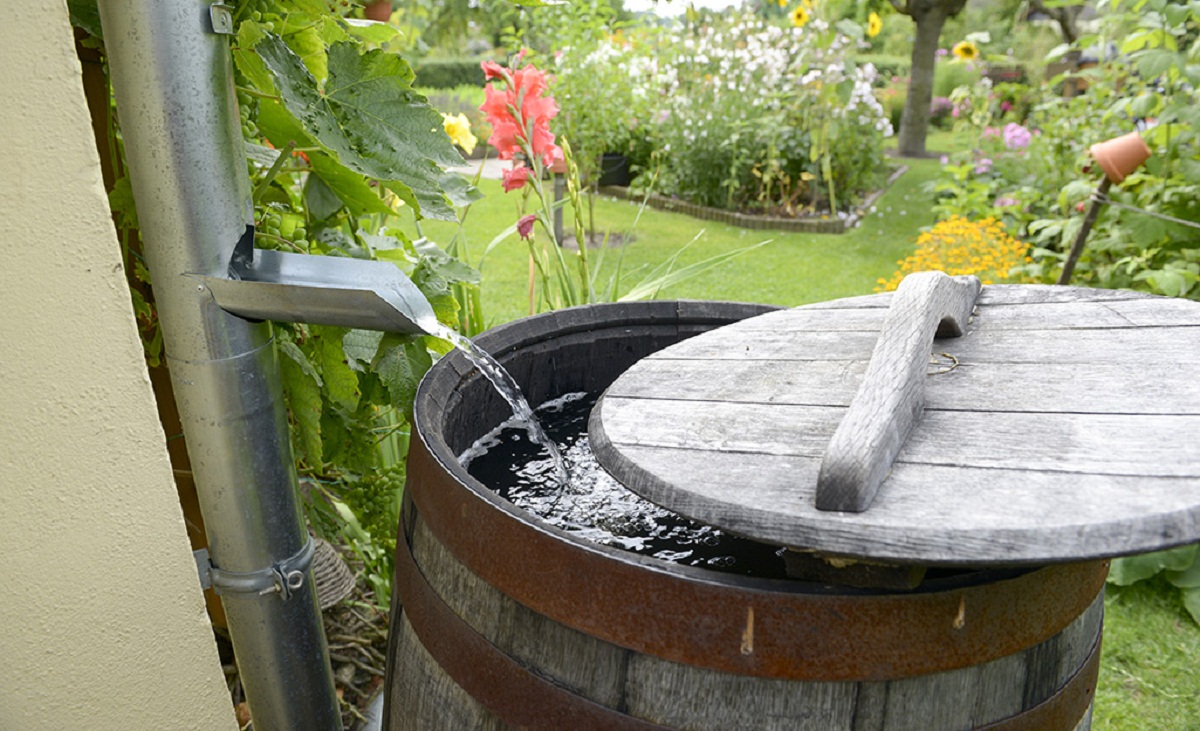
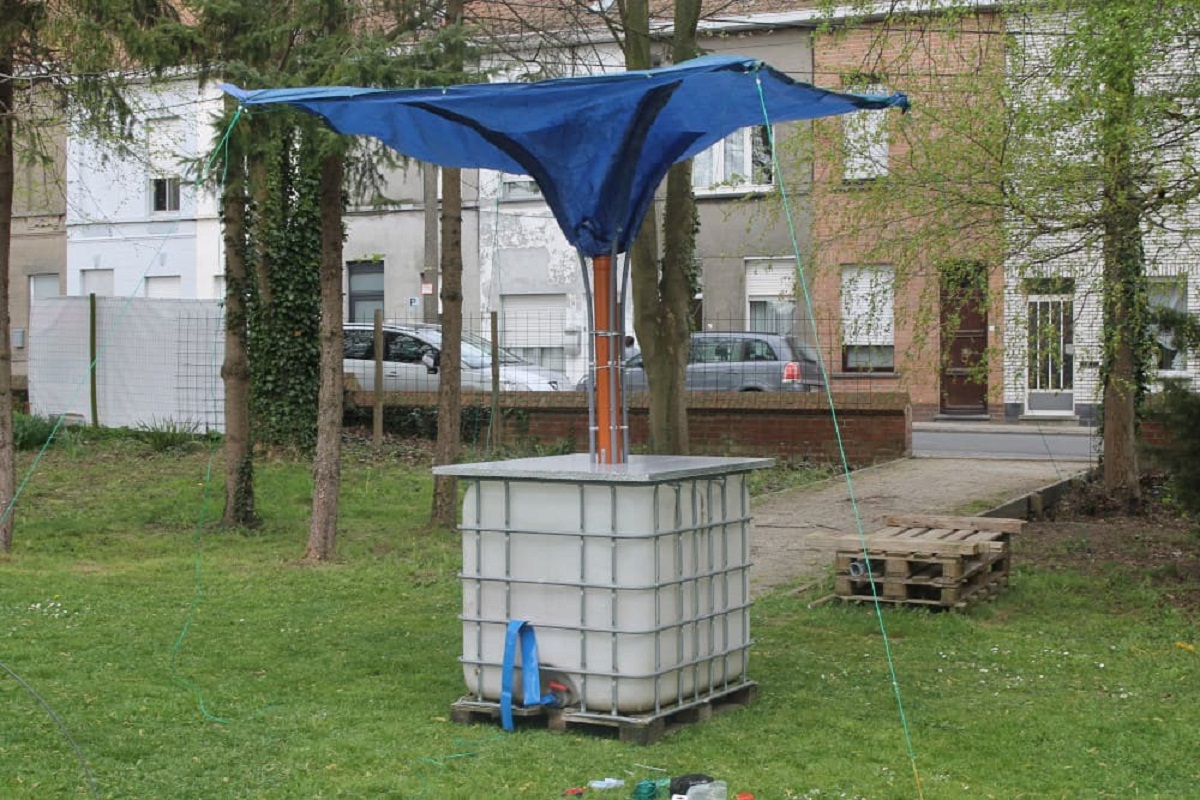
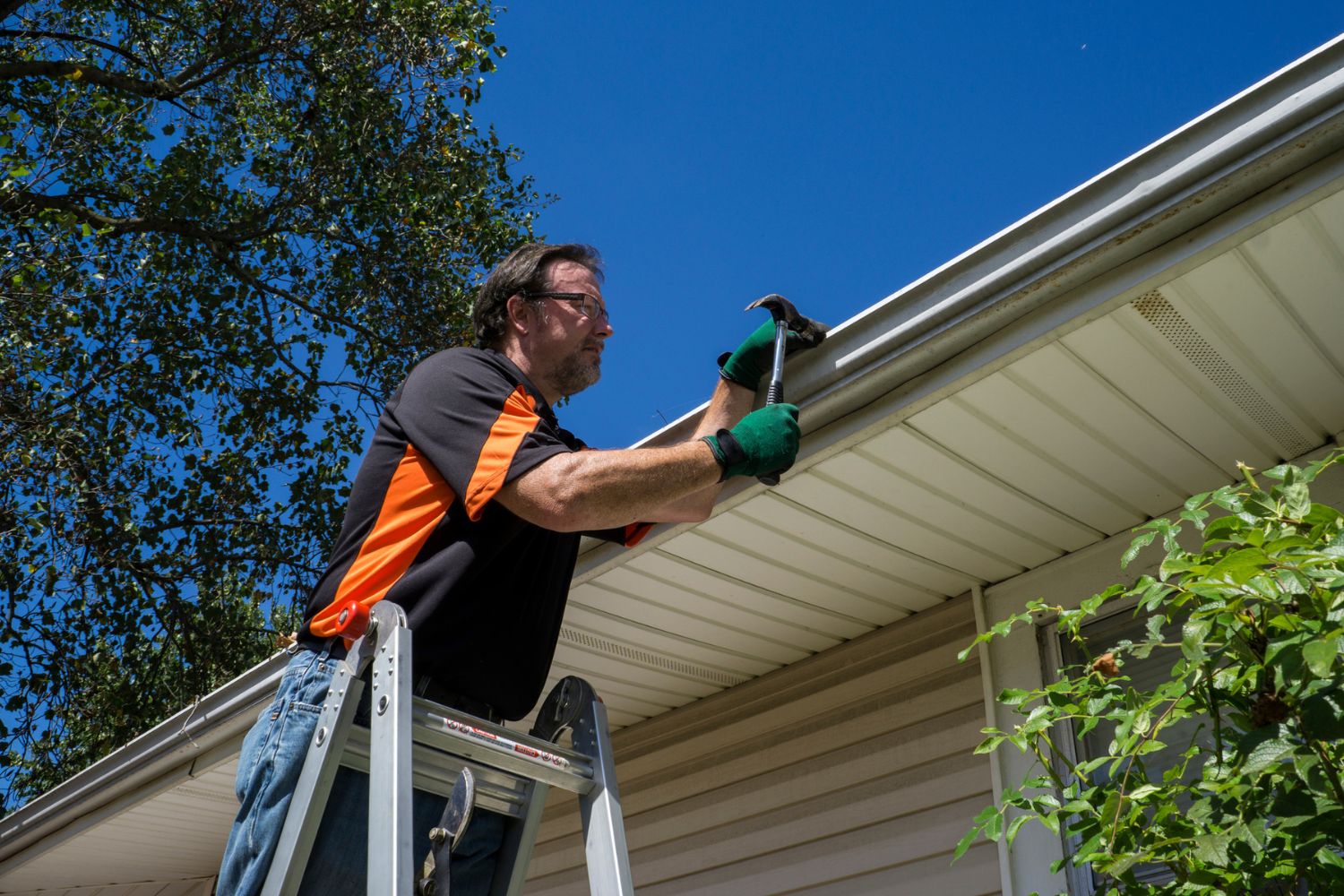
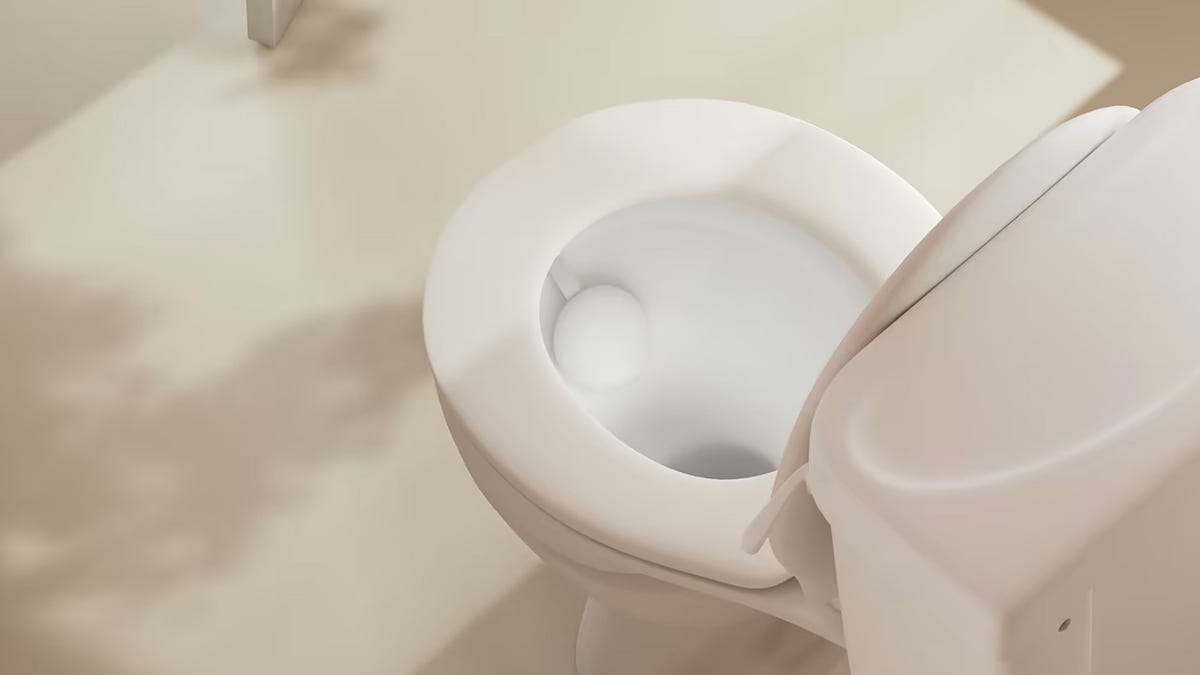
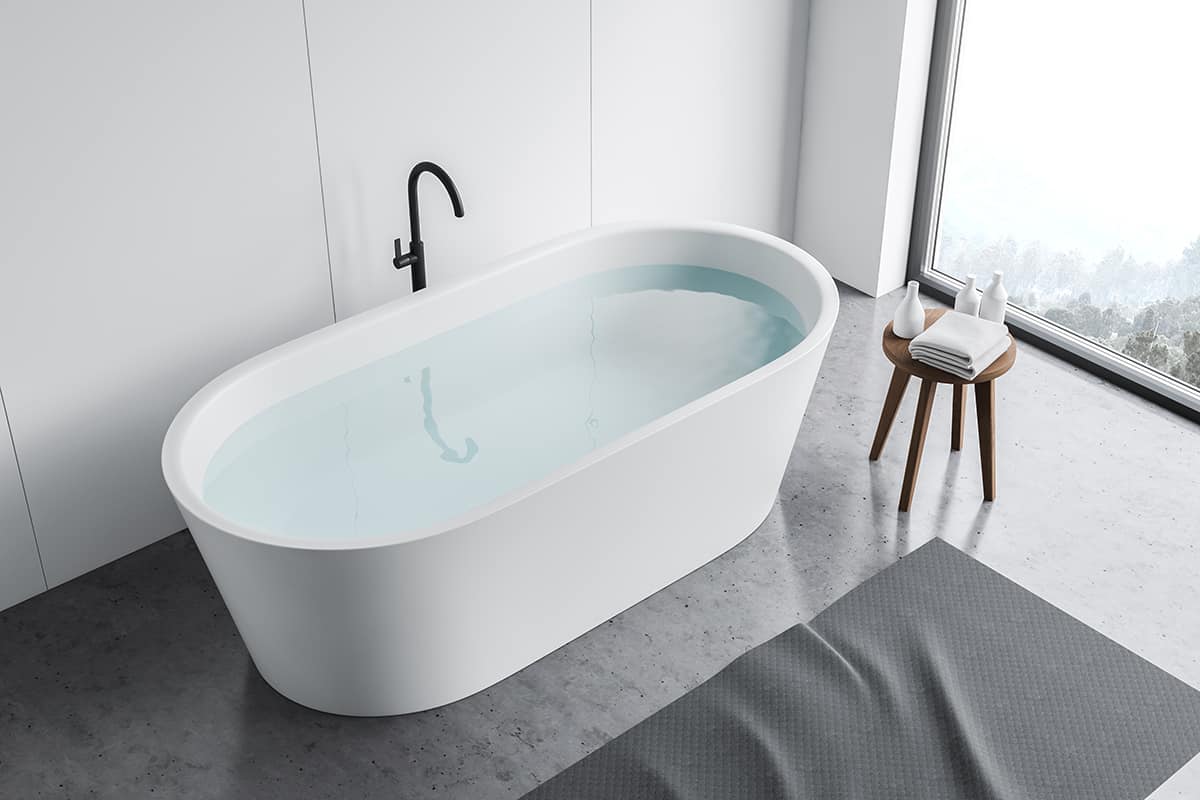


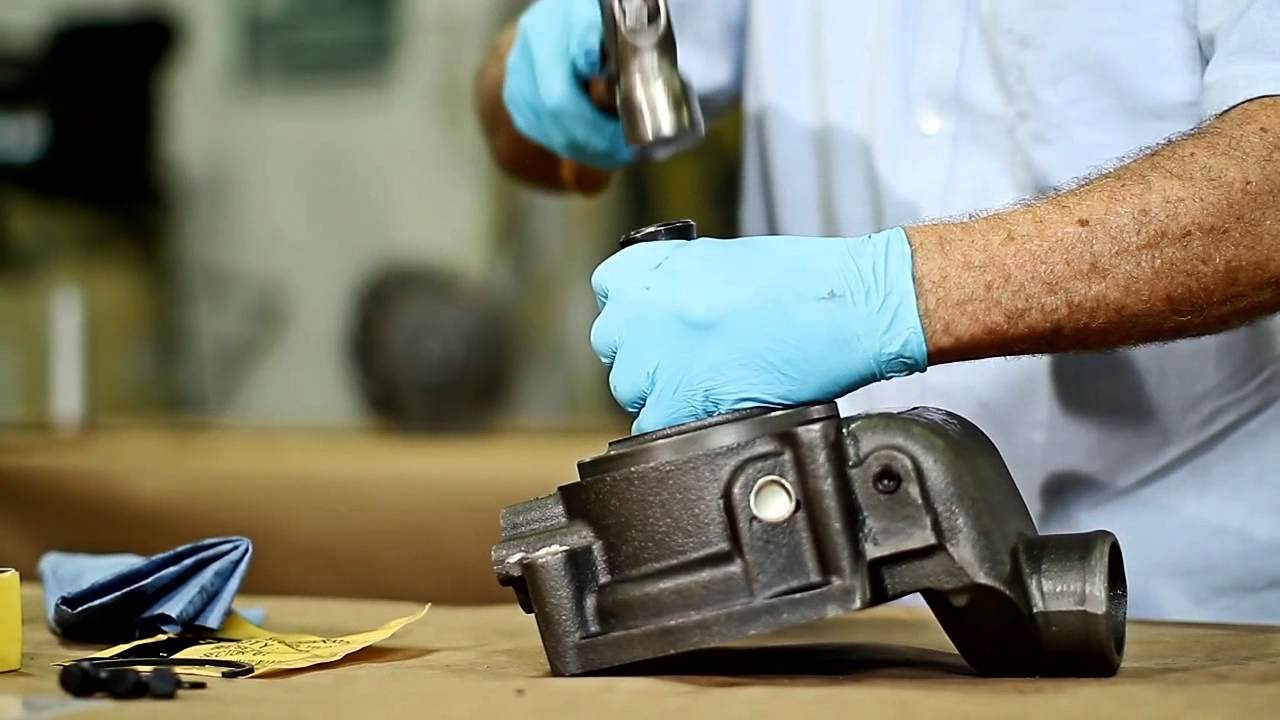



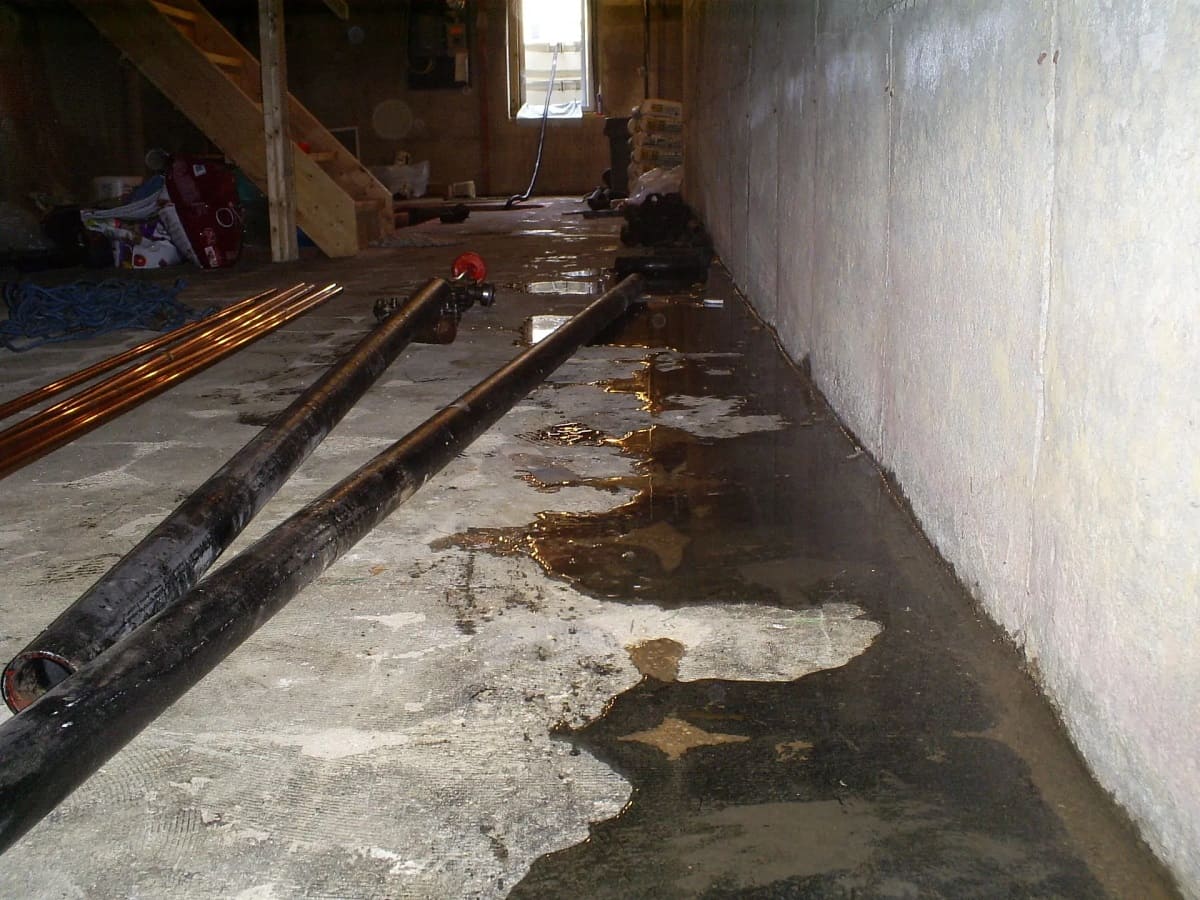


0 thoughts on “How To Fix Gutters Holding Water”